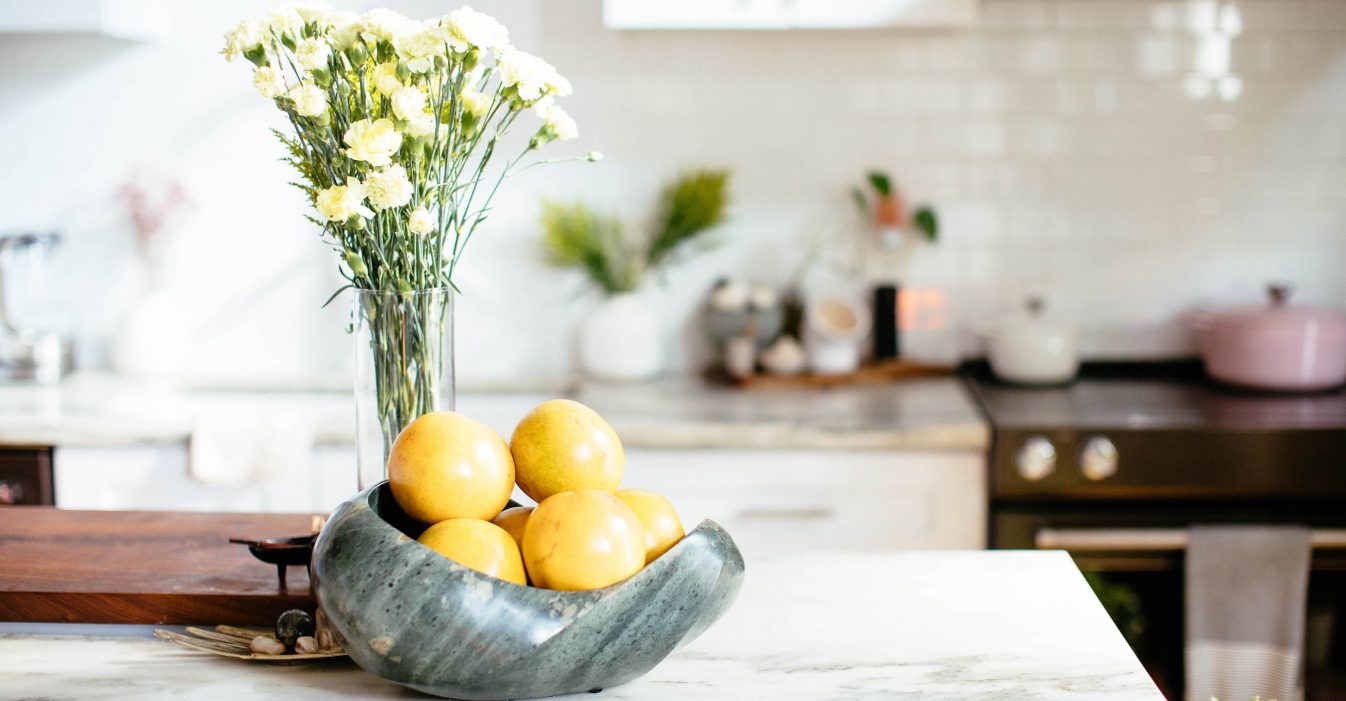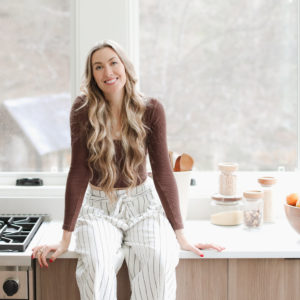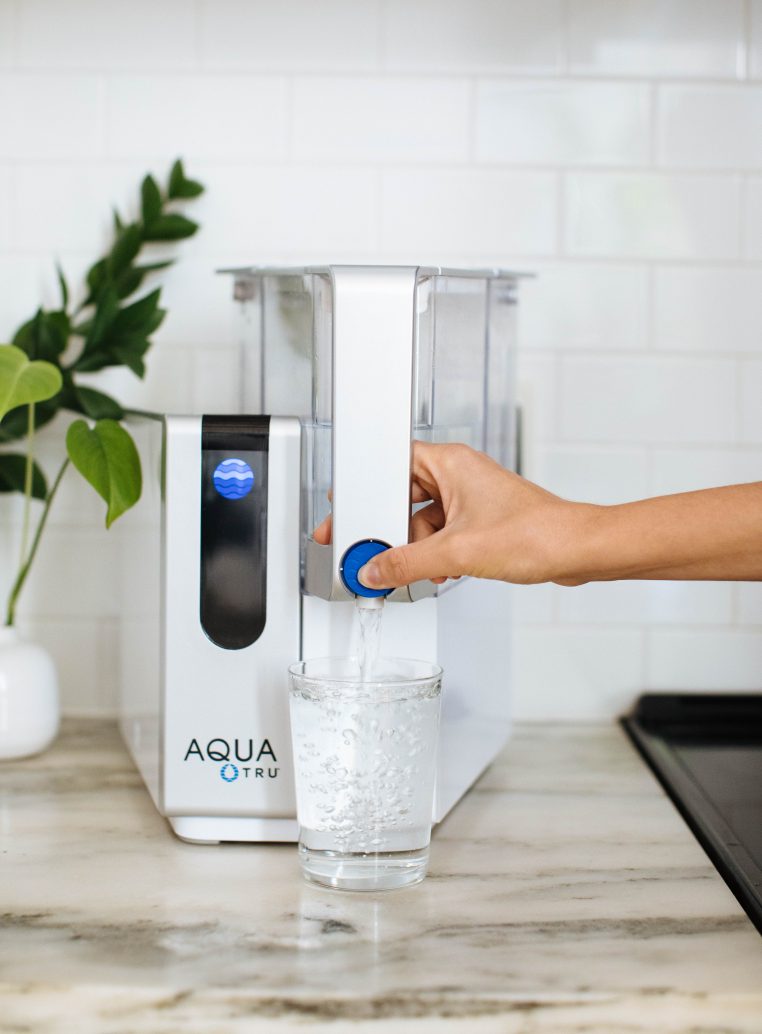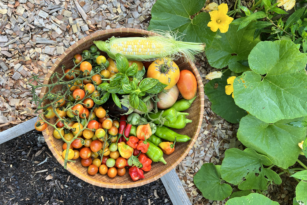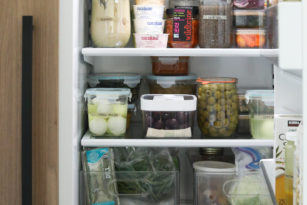We spend so much of our time indoors and in our home, which is why creating a non-toxic home and practicing non-toxic living is an important part of caring for your health and wellbeing.
The Environmental Protection Agency says that indoor air quality can be five times worse than outdoor air quality, with one major contributor to that being to the increased use of synthetic furnishings, personal care products, pesticides, and household cleaners.
In addition to these types of toxins that can get into our air, there are others that may leach into our food or drinking water and others that contribute to noise and light pollution in our homes — all of which can affect our wellbeing in the short- and long-term.
What to Look for When Transitioning to a Non-Toxic Home
Over the majority of my adult life, and especially in the past few years, I’ve been very mindful about what we purchase and use in our home.
You absolutely don’t need to go out and completely transform your home overnight, but as you’re replacing items, upgrading, etc. you can be mindful to make healthier choices for your home (and often the environment too!)
These are some of the swaps I’ve made in our home and what you can do as well to remove these toxins from your home overtime!
Opt for Green Materials for Your Mattress, Linens and Furniture
You may not have realized this, but the textiles and materials that makeup things like your sheets, mattress, and furniture can contain toxins or synthetic materials (like plastics) that can bring unwanted toxins or chemicals into your home.
Opting for organic options can help reduce the number of toxins in your home. (Plus, organic options can also help keep pesticide, herbicides, synthetic fertilizers, other non-organic agricultural runoff, and microplastics from getting into our soil or further contributing to air and water pollution.)
We spend 90% of our time indoors — and one-third of that time in bed, so a key area to focus on for creating a non-toxic home is the bedroom.
Mattresses can be a source of a major toxin. Polyurethane, which contains volatile organic compounds (VOCs) like formaldehyde, benzene, and naphthalene is the main component of a memory foam mattress.
The main ingredient of memory foam mattresses is polyurethane, which contains volatile organic compounds (VOCs). Common VOCs found in memory foam mattresses include formaldehyde, benzene, and naphthalene. These things can contribute to a variety of short- and long-term health effects like headaches, nausea, eye/nose/throat irritation, and damage to your liver, kidneys and central nervous system
Many mattresses also have flame retardants which also have potential health risks like causing damage to our endocrine, immune and neurological systems.
This was initially a big shock to me — it’s just something that you don’t think too much about or you don’t realize just how much of an impact it can have.
A few years ago when I learned about this, I swapped out my mattress for an Avocado Green Mattress!
I’m a big researcher and Avocado Mattress had the most transparent and detailed information about their materials, sourcing, and environmental impact and it aligned so well with what I value and was looking for. I’m all about brands that have missions to support your healthy lifestyle and that are better for the planet.
They use all natural and green materials throughout the entire mattress (plus in their bed linens and furniture too!), and they don’t include any chemical flame retardants or petroleum-based polyurethane foams that are so common in other mattresses.
Plus, you all know I’m a big believer in the importance of sleep and this mattress is super comfy!
We also use their bed linens which are all organic cotton and feel amazing so you can really soak up on a good night’s sleep.
As much as possible throughout our home, we’re using natural and green materials like organic cotton, linen, ethical wool, and bamboo when choosing dish towels, bath towels, bed linens, blankets, etc.
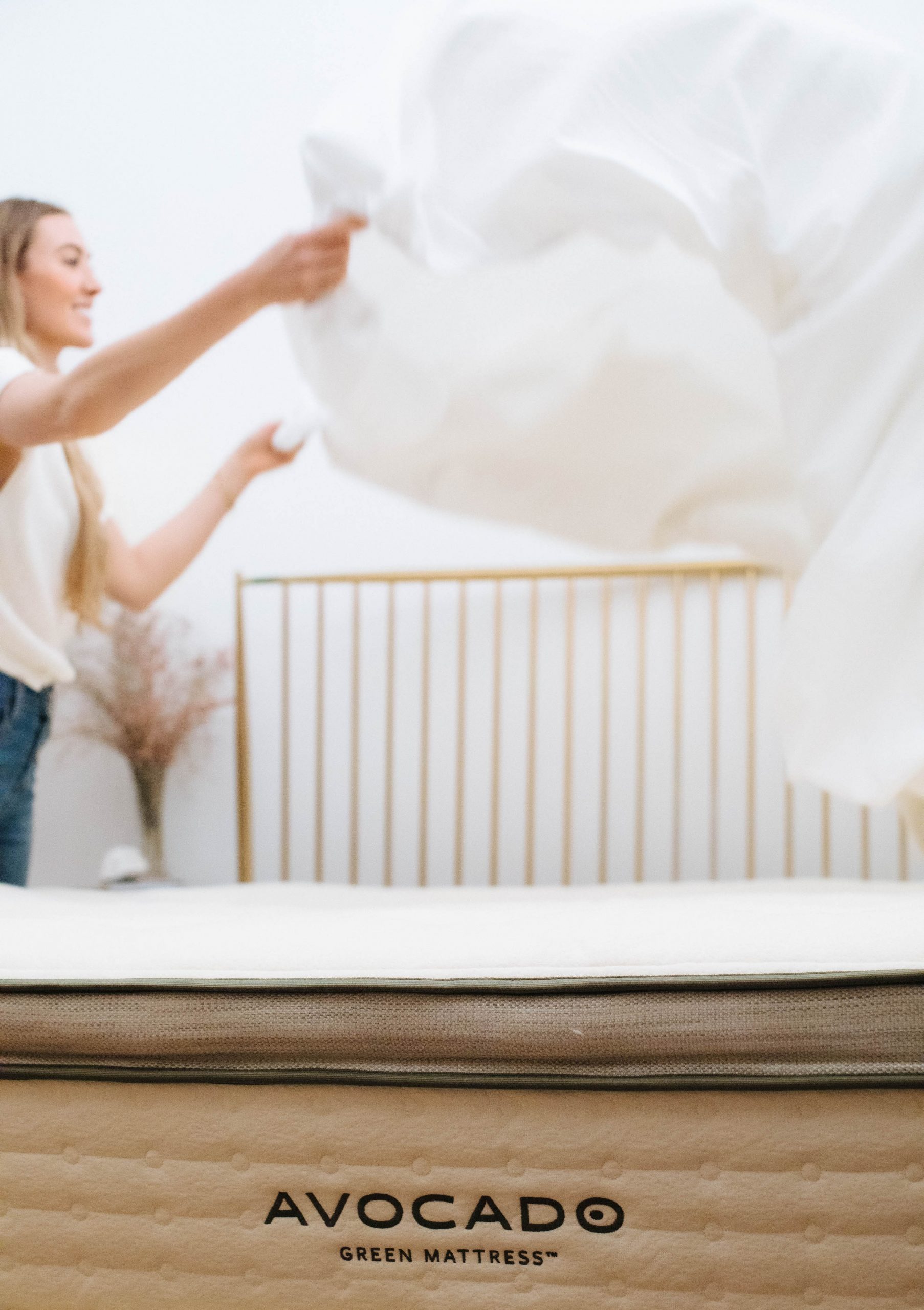
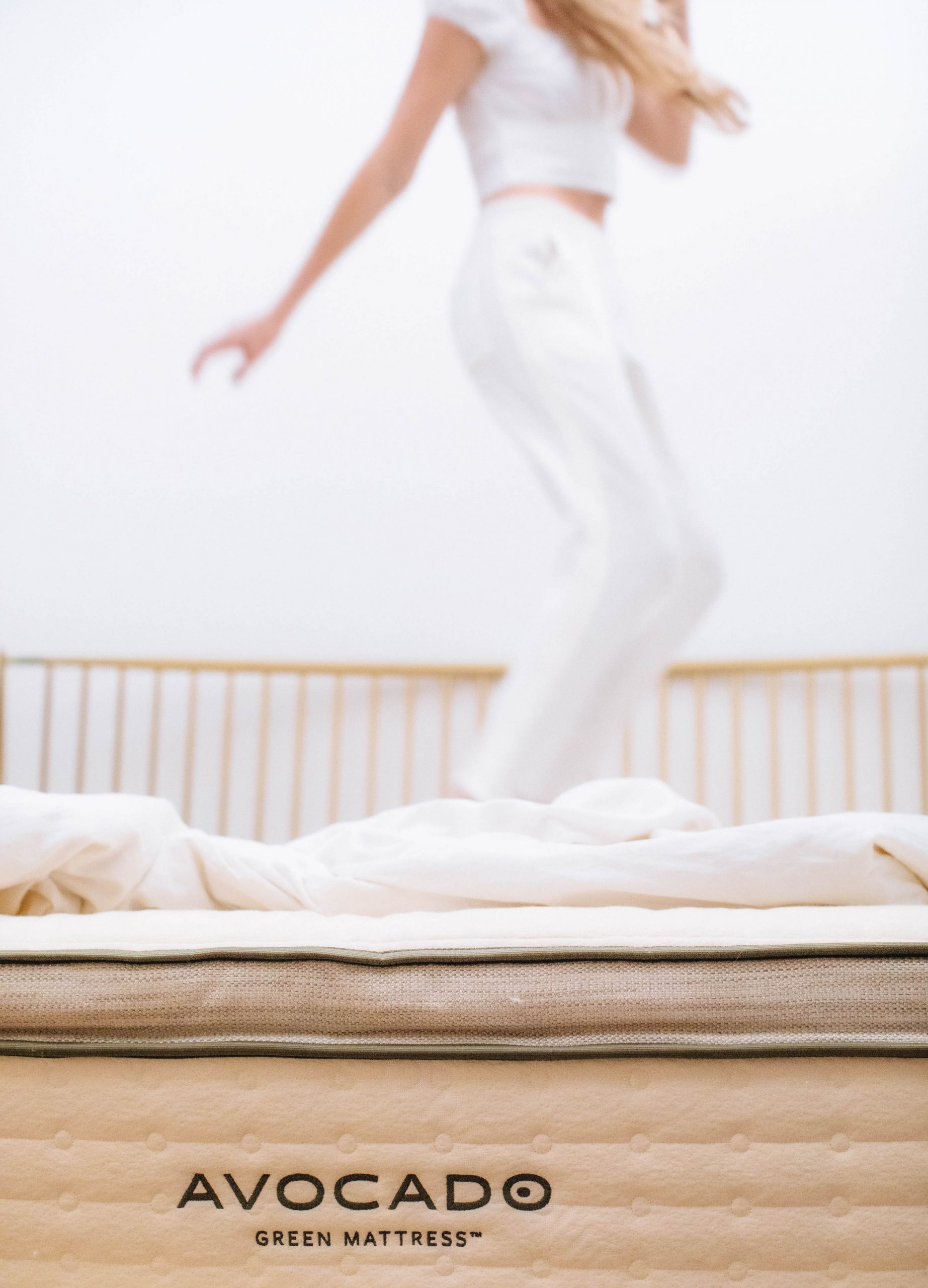
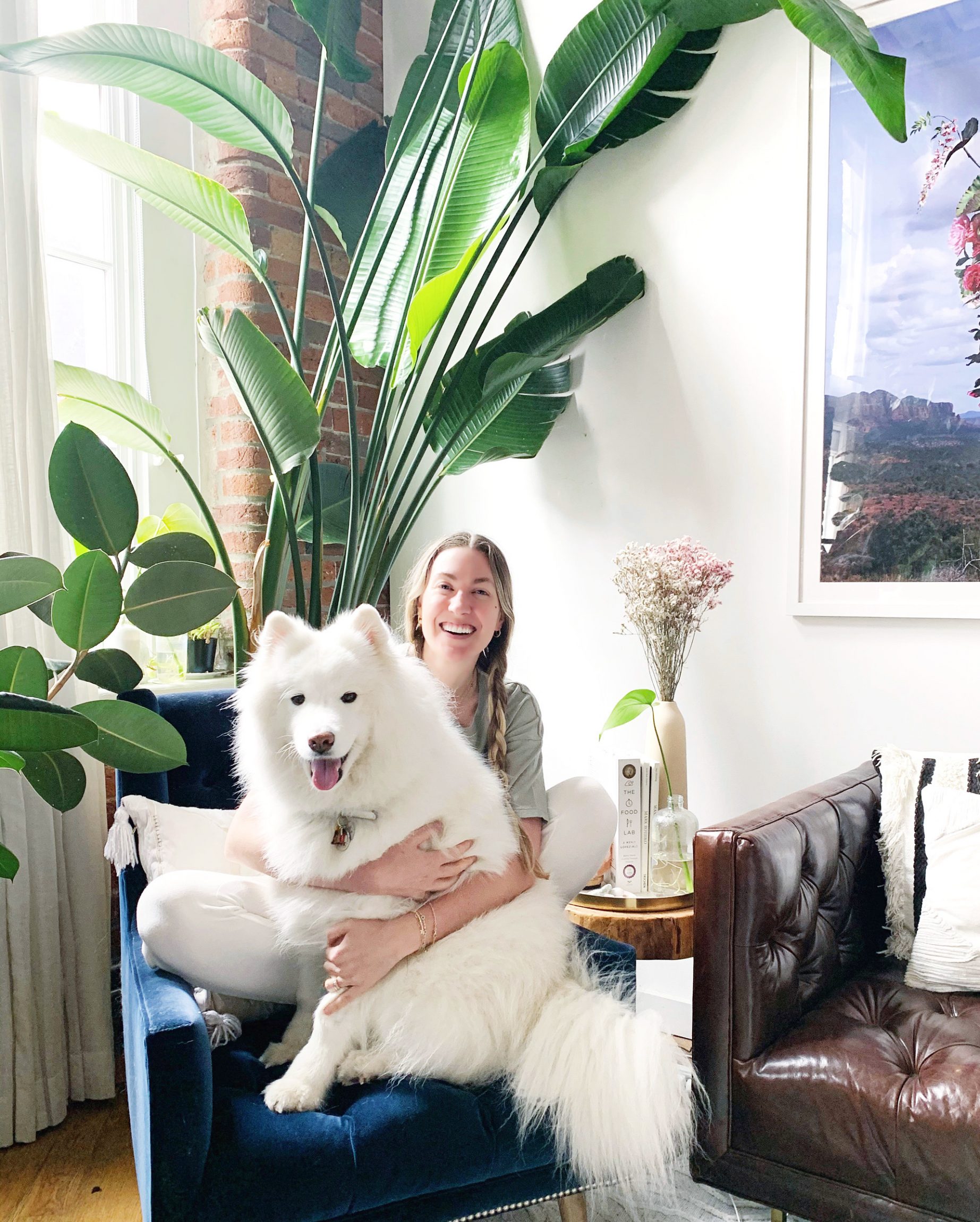
Use Non-Toxic Cleaning Supplies in Your Home
I’ve always been really mindful of the chemicals in cleaning supplies.
If you don’t already use all-natural cleaners, these are a few areas to consider making a swap the next time you go to a refill that will help you with maintaining a non-toxic home.
Castile soap: I love using this for a multi-purpose cleaner and it doesn’t hurt that it’s actually a body wash too.
Baking soda: Baking soda is great for neutralizing odors and when mixed with vinegar created a bubbly cleaning solution (always test small areas before going all-in).
Vinegar: Because of its acidic nature it removes grease, grime, and any build-up. Because of the strong smell, try adding in a couple of drops of orange or lemon essential oil and it’ll smell much better.
Orange essential oil: Great for keeping bugs and ants off kitchen countertops and also has a bright smell. I mix this with water or vinegar for a multi-surface cleaner and wipe off with a cloth.
Lemon juice: Smells amazing and is great for polishing and cleaning up stains. I use this in my kitchen sink all the time and put it down the disposal to help clean the blades while making it smell nice.
Laundry Detergent: Opt for all-natural and unscented.
Use Non-Toxic Cookware In The Kitchen
Cookware can actually be a source of a variety of toxins.
Unfortunately, many options may cause different chemicals to leach into your food during the cooking process.
For example, non-stick options — usually labeled in some way as Teflon — contain perfluorooctanoic acid (PFOA or C8) or polytetrafluoroethylene (PTFE). These have been determined to be carcinogenic.
Another popular option is the stainless steel cookware. This is largely deemed much safer than the non-stick, although there still are some concerns with nickel and chromium potentially leaching into the food. Research has found this can happen if you’re cooking something for a long time or you’re cooking with acidic foods (like a tomato), or cooking at a high temperature.
One safer option is The Always Pan. This is a non-stick ceramic-coated pan that’s designed free of Teflon, PTFE, and PFAS and has been tested to be safe.
What I love about it is that it can replace 8 pieces of traditional cookware! This makes it perfect for smaller kitchens or if you’re just cooking for one or two people. It’s also dishwasher safe, so it’s convenient for everyday cooking!
Reduce Your Plastic Usage
Reducing plastic is another one of those great areas to focus on when creating a non-toxic home.
As things get old, break, rip, etc., upgrade your plastic items to glass containers to avoid the BPA that is found in most plastics.
You can also opt for reusable zip-lock bags and reusable totes as well.
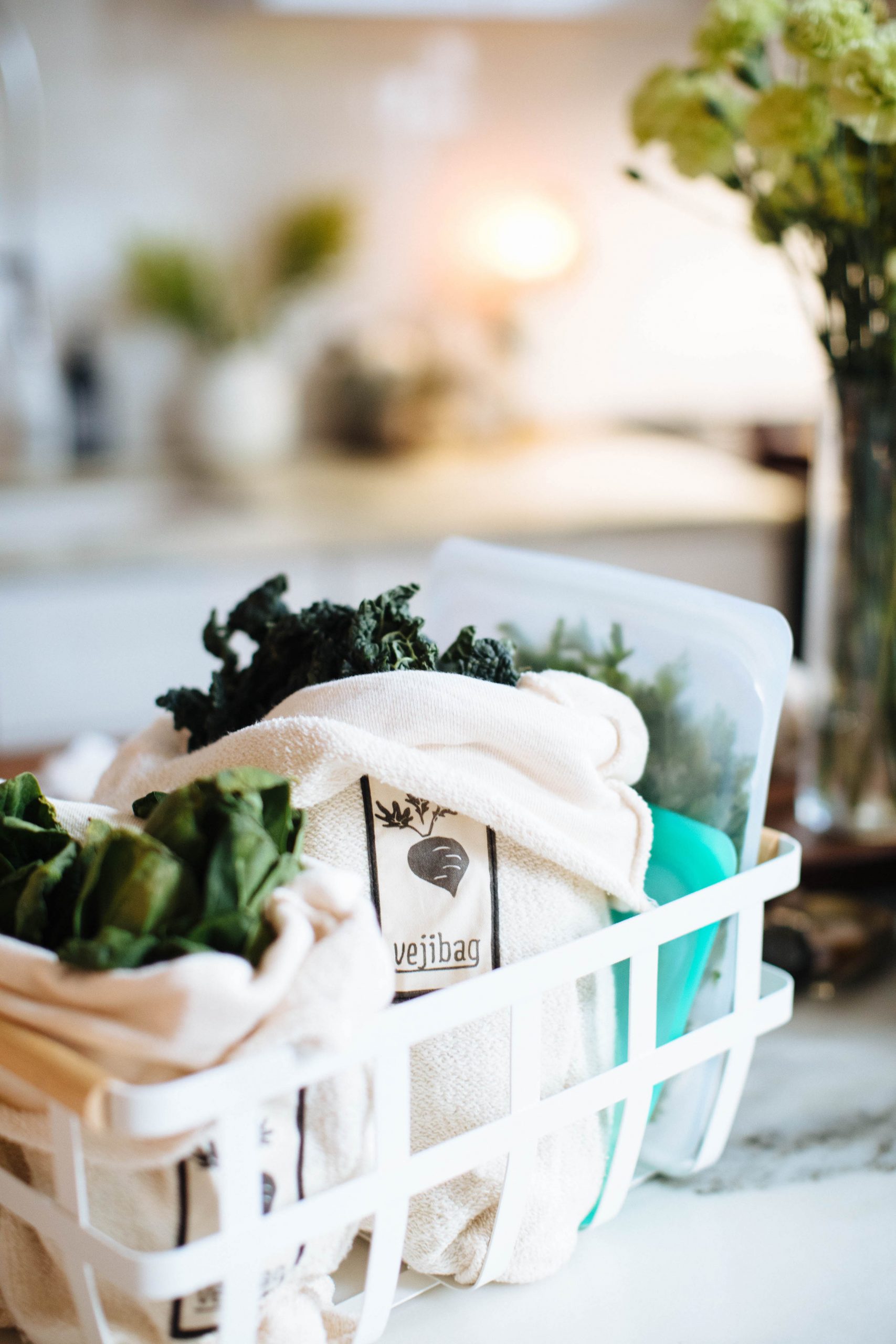
Invest in an Air Filter
Removing some toxins or not ever bringing them into your home in the first place will help reduce some of the indoor air pollutions you may have in your home.
To take it a step further, investing in a high-quality air filter can be a game-changer.
We use the Air Doctor by AquaTru and Intellipure.
Be sure to change your air filters in your home HVAC unit or if you use portable AC / heat units be sure you’re changing the air filters regularly.
If you can’t invest in an air filter right now, simply crack the window open and allow fresh air to run through the house weekly or as much as possible when the outdoor air quality is good! That will help move fresh air through your home.
Also, be sure to clean out any artificial scents you may have in your homes like scented candles, air fresheners, or sprays.
Instead, opt for essential oils or flowers and plants that can also work to reduce pollutants and allergens without bringing in any other toxins or chemicals.
The top non-toxic house plants said to give off better air quality are spider plants, dracaena, ficus, peace lily, snake plant, Boston fern, bamboo, and aloe.
Filter Your Water
There are several studies that show tap water isn’t as clean as we may think and if you want to practice non-toxic living, this is an area to pay attention to.
Water purification systems work in many different ways to remove harmful toxins, chemicals, and contaminants from your water. While some physically separate sediment and solid particles, others push liquids through a semipermeable membrane or use a combination of heat and light to kill off microorganisms.
I use a reverse osmosis system, which is a purification process in which water passes through a semipermeable membrane to remove contaminants like heavy metals and toxins — things that aren’t removed from a standard filter.
We chose AquaTru for our home because it uses a four-stage osmosis process to remove 78 contaminants from water.
Don’t Forget About Light and Noise Pollution
These two are easy to overlook but just as important to pay attention to.
Blue light, like that coming from phones, computers, and other devices or lighting, can affect your health. Light at night is part of the reason so many people don’t get enough sleep, and researchers have linked short sleep to increased risk for depression, as well as diabetes and cardiovascular problems.
Opt for warmer lights like sea salt lamps, beeswax candles, and natural light as much as possible.
We like trying as much as possible to mimic the natural rhythm of the sun and after sunset, we typically turn off all blue lights and switch over to beeswax candles (which seems quite primitive but amazing and cozy!). Or we turn on sea salt lamps which are a beautiful amber warm color which is more conducive to relaxation.
You can also use blue light blocking glasses when working throughout the day when you don’t have the option to turn off the blue light.
You can also get rid of external stimulation as much as possible by adding a white noise machine that can create a calming environment especially for those living in a city.
Putting it All Together to Practice Non-Toxic Living
Health is a daily practice, and we can all look for areas where we can be more mindful of our choices. Taking baby steps, making little swaps and changes over time can add up.
Are you working on creating a non-toxic home? What are some swaps, tips, or things you’ve learned along the way? Share with the community in the comments below!

